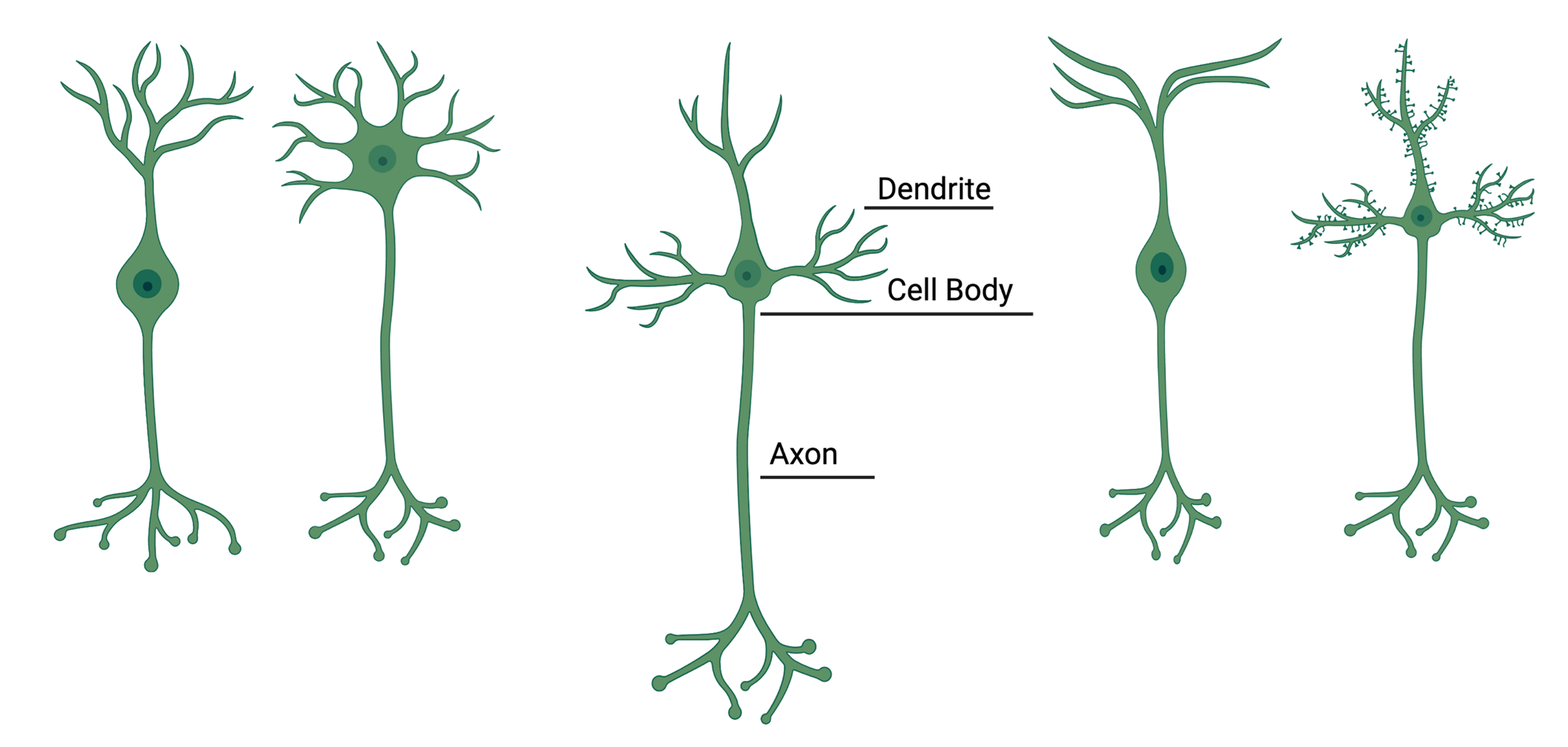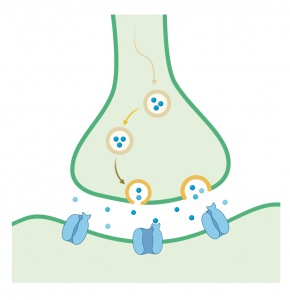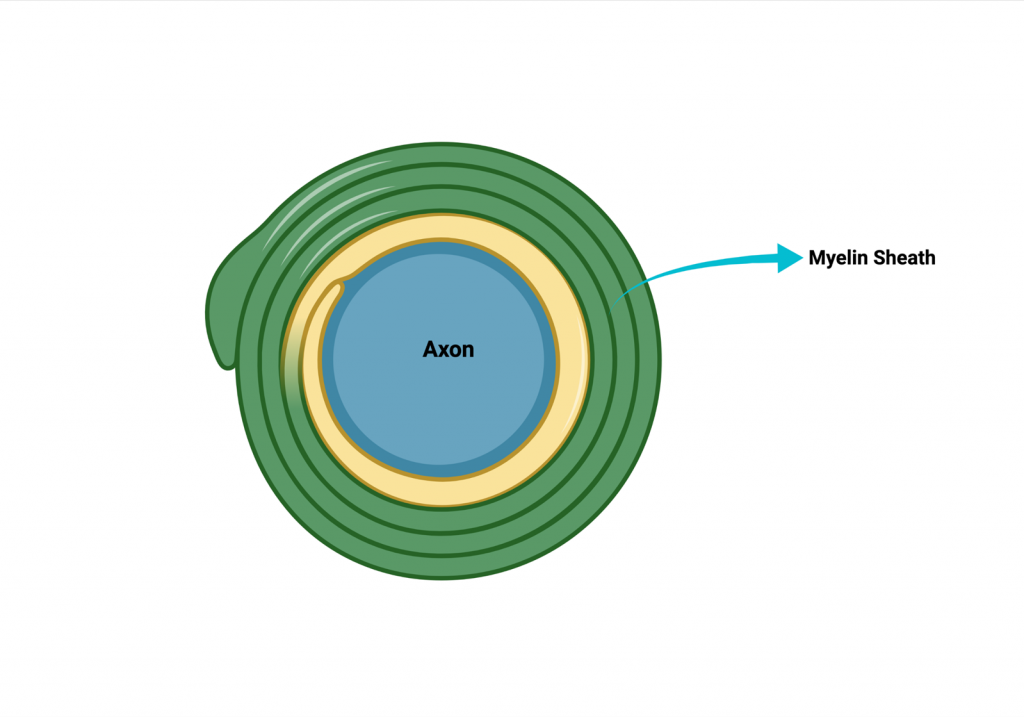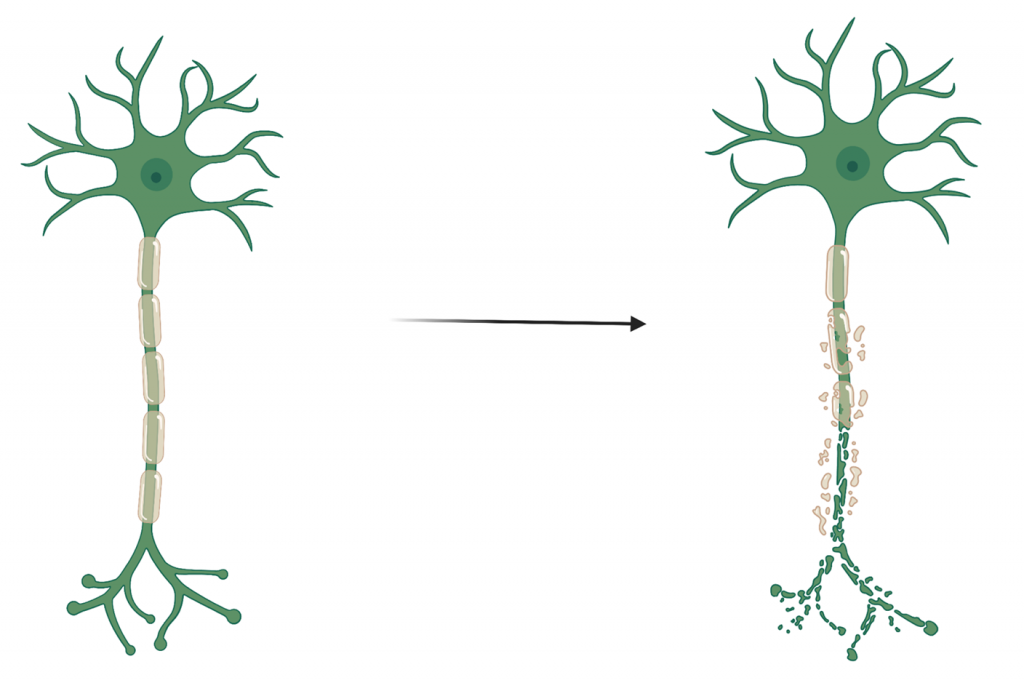By Keith Fargo, Ph.D., Chief Scientific Officer, CMT Research Foundation
Charcot-Marie-Tooth disease, or CMT, is a disease in which the peripheral nerves that branch out from the brain and spinal cord to other parts of the body, like our hands and feet, don’t work properly. Over time, people with CMT experience muscle weakness, deterioration and loss of movement and independence. Because CMT is a complex disease, it is helpful to understand the parts inside our body that cause the disease and how they work, including the role played by neurons, Schwann cells and the myelin sheath in CMT.
Neurons and CMT: What is a neuron?
A neuron, sometimes referred to as a brain cell or nerve cell, is a type of cell that can communicate rapidly with other cells through electrical and chemical signals. Found in our brain, spinal cord and peripheral nerves, neurons are responsible for our abilities to perceive, think about and respond to the world around us. From simple experiences like smelling fresh baked cookies to the most complex movement patterns of athletes and dancers, all information that our nervous systems collect, process or store moves through our neurons.
While neurons come in many shapes and sizes, they share several common parts — a cell body, dendrites that collect information and carry it toward the cell body, and a long axon that carries information away from the cell body. Our genetic code is found in a special enclosed structure inside the cell body, called the nucleus.

Image created with BioRender
When activated, a neuron can produce an action potential, which is an electrochemical pulse that travels down the axon from one end to the other. In sensory systems, this is how signals are brought to the spinal cord and brain, and in movement (motor) systems, this is how signals are carried to the muscles and glands. Once an action potential reaches the end of the axon, the neuron releases signaling molecules called neurotransmitters into a small space called a synapse (see image below). On the other side of the synapse is another neuron, a muscle cell, or some other cell type, which receives the signal carried by the neurotransmitters. If the neighboring cell is another neuron, this signal will cause it to be either more likely or less likely to fire an action potential of its own. If the neuron is instead connected to a muscle, the signal will cause the muscle fiber to contract. How do neurons cause CMT? This system is compromised in people with CMT, resulting in symptoms of the disease.

Image created with BioRender
Schwann Cells and the Myelin Sheath in CMT
The peripheral nerves also contain another special cell type called Schwann cells. Many of the axons that carry signals along your peripheral nerves are wrapped tightly in Schwann cells — this layered wrapping is called the myelin sheath.

Image created with BioRender
Rather than being an elongated single sheath, the myelin layers are formed as multiple long sections that cover most of the axon’s surface (see picture below). The areas between the myelin sections, where axons are exposed, are called nodes of Ranvier. The myelin sheath serves several important functions in our bodies.

Image created with BioRender
Insulation
The layers of the myelin sheath provide electrical insulation, similar to how rubber or plastic wrapping can provide insulation for metal wires. This insulation allows the electrical pulses, the action potentials described above, to travel more efficiently and rapidly along the axon. When the myelin sheath degrades, action potentials slow down, and the signals from your brain and spinal cord take longer to reach the muscles.
Nourishment
In addition to providing electrical isolation, the myelin sheath has an important role in the nourishment of neurons. Neurons are very sensitive to changes in their immediate environment; throughout and after the development of the nervous system, myelination controls the molecules that are allowed to reach the axons, ensuring that they are provided with the macromolecules they need and protected from damaging processes. When the myelin sheath degrades, it can result in the dysfunction and “dying back” of axons. When this happens, fewer signals from your brain and spinal cord reach the muscles, resulting in weakness, falling, and even deformity of the joints.
The myelin sheath in CMT1
The most common form of CMT is CMT1. This type is caused by demyelination, which means the breakdown of the myelin sheath. People with CMT1 have genetic changes that interfere with the proper formation and maintenance of the myelin sheath.

Image created with BioRender
Motoneurons
Motoneurons (short for motor neurons) have cell bodies in the brainstem or spinal cord and send their axons out through the nerves to control the activity of other organs, such as muscles and glands. Motoneurons communicate with muscle fibers by a specialized synapse called the neuromuscular junction, where neurotransmitters exit the motoneuron and activate muscle fibers to contract (see image below).

Image created with BioRender
Sensory neurons
Sensory neurons are activated by stimuli in the environment, such as changes in temperature, pressure, texture, chemicals, light and sound waves, and more. Once stimulated, sensory neurons transmit the information to the brain for processing. In situations in which very rapid responses are needed, such as maintaining balance or pulling your hand back from something hot, the sensory signal may result in a reflex, meaning that the sensation triggers a response immediately from motoneurons in the spinal cord, rather than needing processing in the brain.
Learn more about CMT, its symptoms, types and treatments here.
Special thanks to Ori Rokach, Ph.D., for assistance in preparing this article.
